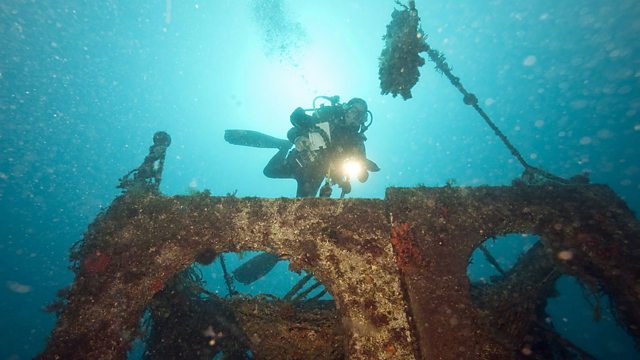
Artificial Reefs
How do artificial reefs change marine environments? Is winning a classical music competition about body language or skill? Plus Rural areas get themselves connected.
Artificial Reefs
There have been artificial reefs around Gibraltar since 1973 when tyres were tied down to the sea bed to attract marine wildlife. In 1974 sunken ships were used. Now, in 2013, a number of concrete blocks have been dropped into the sea. But what is an artificial reef? We look at how artificial reefs are made and what effect they have on the marine environment.
Classical Music and Body Language
To judge a classical music competition you might expect a good ear is essential. But did you know your eyes might be equally important? New research at University College London shows that the best predictor of a winner's musical performance was the visible passion they displayed, followed closely by their uniqueness and creativity. An artist's stage presence could be even more important when it comes to evaluating a recital. The research, published in the journal PNAS (Proceedings of the National Academy of Sciences) found that people shown silent videos of piano competitions could pick out the winners more often than those who could also hear the music. It underlines the dominance of our sense of vision, scientists say.
B4RN
The myth is that we all inhabit a world of high speed broadband connectivity. But is this really true? In rural areas of the UK many people still depend on their dial-ups and the connectivity is slow, unreliable and often breaks down. Gareth Mitchell and Bill Thompson travel to the north of England to hear about how life and work is hampered by poor connectivity. Fed up with the reluctance of the big telecom companies to come to their aid, some remote, rural communities are taking matters into their own hands, digging ditches and laying fibre-optic cables. B4RN is a community-based initiative for high speed connectivity which is spreading throughout rural parts of the UK.
Photo: A scientist diver discovers the flora and fauna located on artificial reefs. Credit: AFP/Getty Images.
Last on
Chapters
-
Artificial Reefs
How do artificial reefs change marine environments?
Duration: 07:59
Classical Music and Body Language
Winning a classical music competition: body language or skill?
Duration: 02:02
B4RN
Rural areas get themselves connected
Duration: 04:15
Arsenic
Computer models help map arsenic contamination in water in China
Duration: 06:42
Corona Virus
The deadly Mers coronavirus has been isolated in a bat in Saudi Arabia
Duration: 02:35
Evolution of feet
Research published this week shows that our feet are much more ape-like than we thought
Duration: 07:21
Crossrail
New engineering techniques help create 26 miles of tunnels below London's Tube network
Duration: 13:31
New Midwives in Cameroon
New midwives are being trained again after a gap of a quarter of a century in Cameroon
Duration: 05:54
Broadcast
- Sun 25 Aug 2013 14:06GMT大象传媒 World Service Online
Podcast
-
![]()
Unexpected Elements
The news you know, the science you don't

